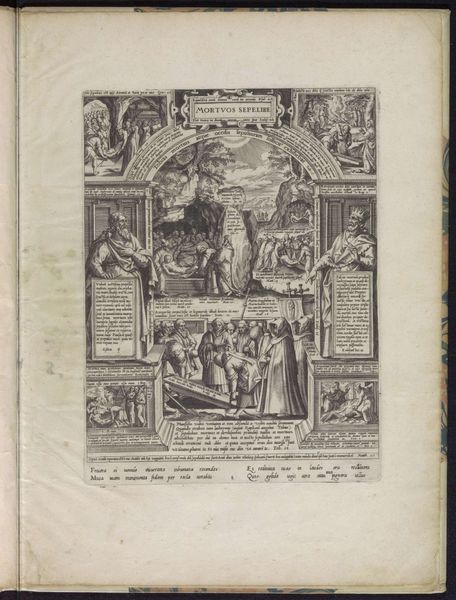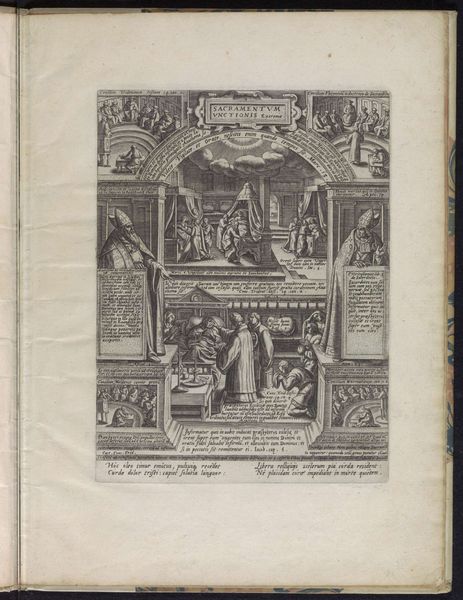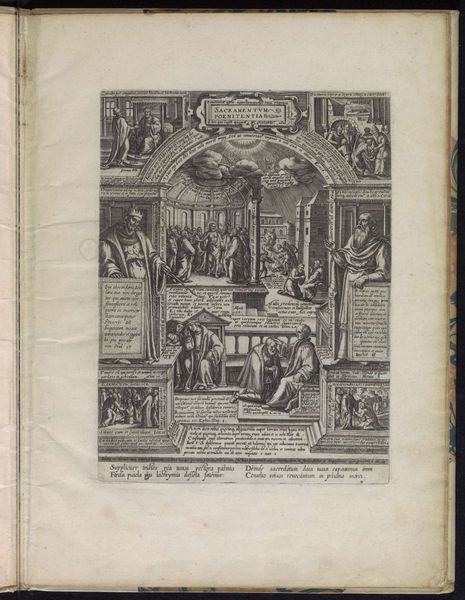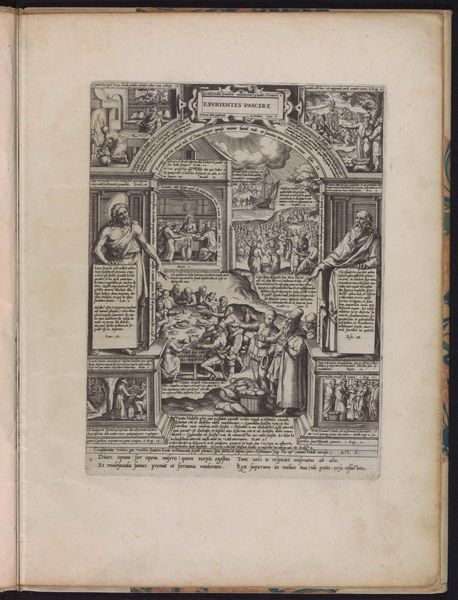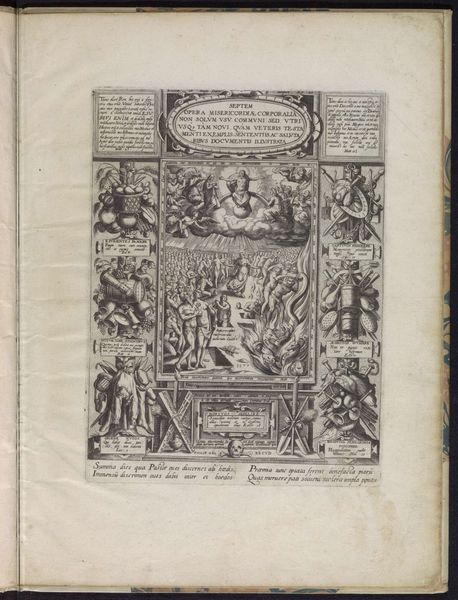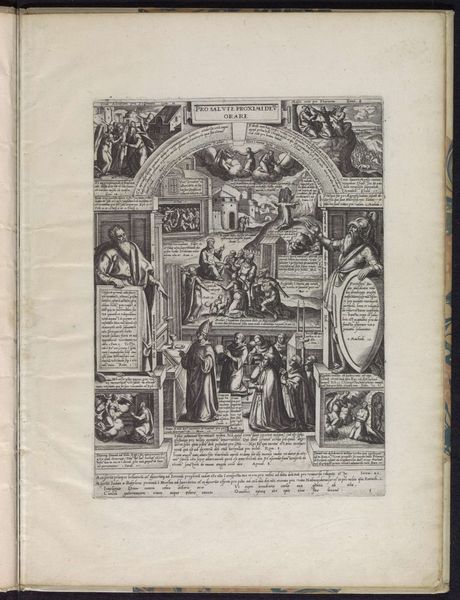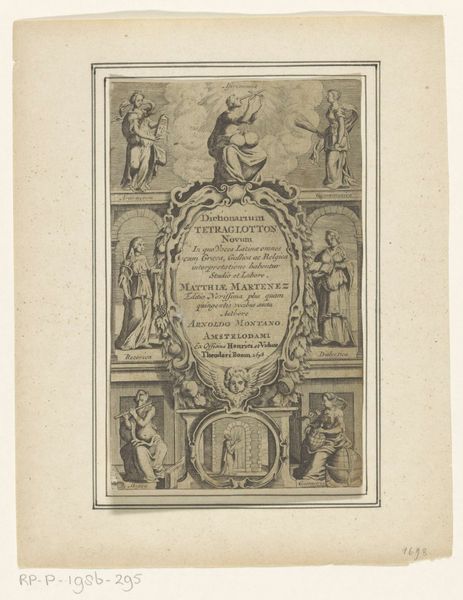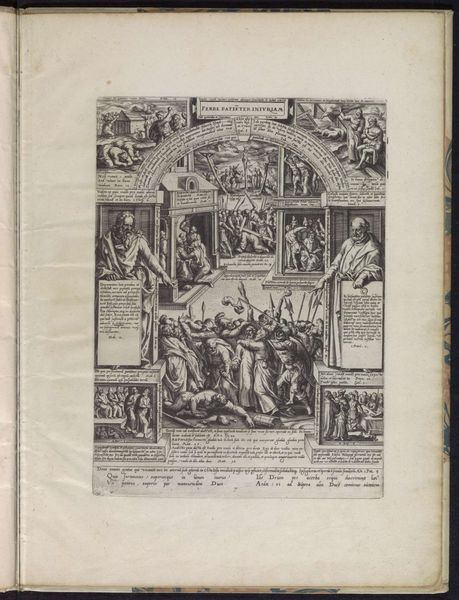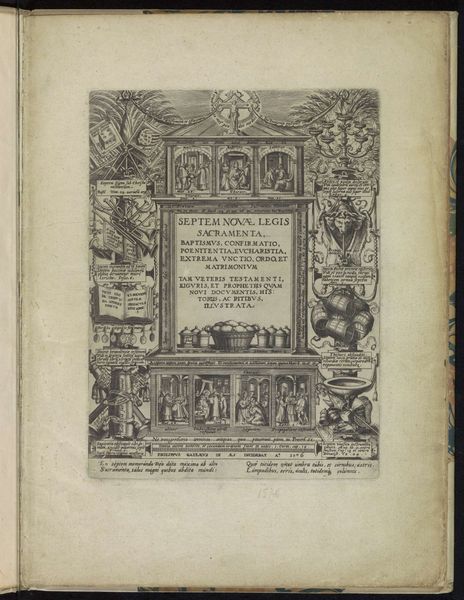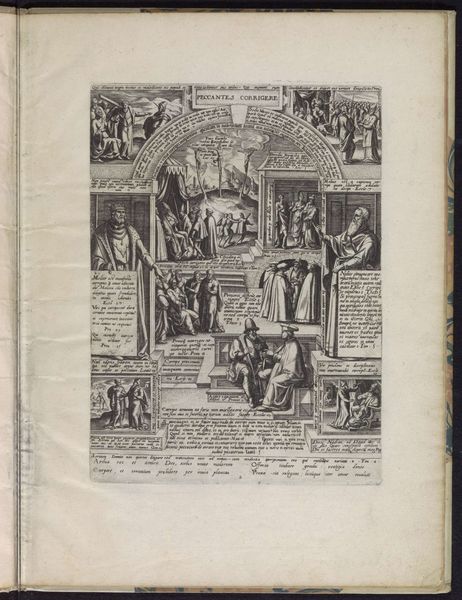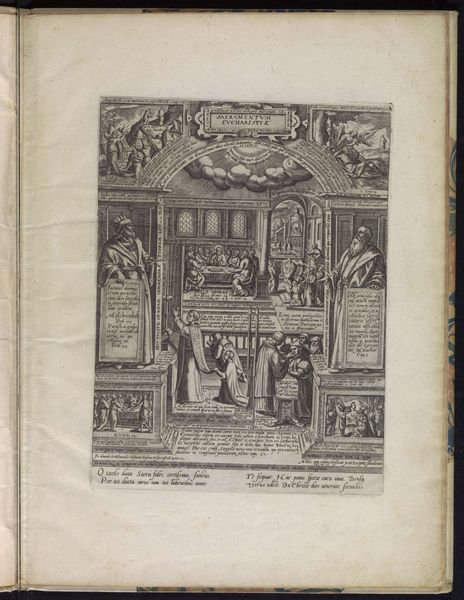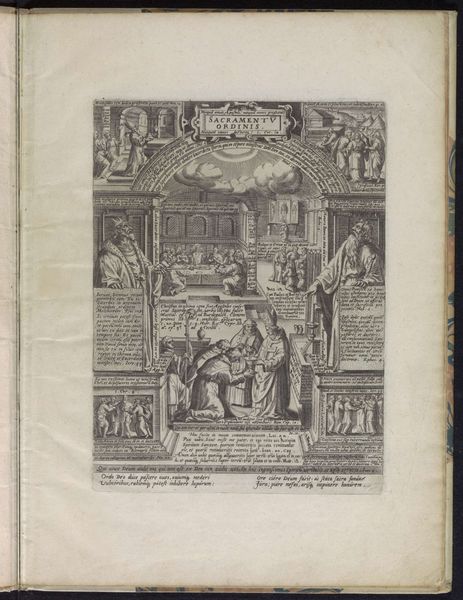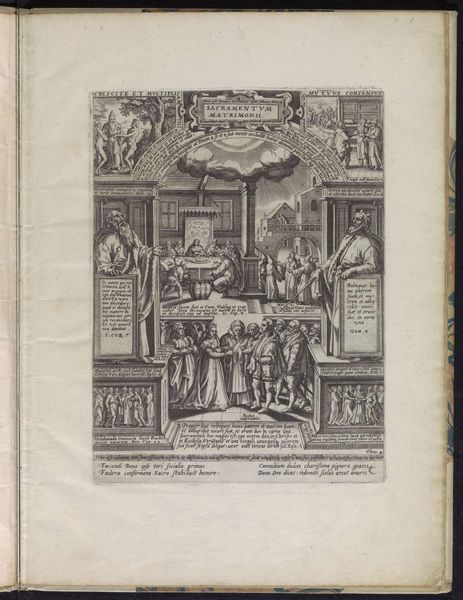
drawing, print, engraving
#
drawing
#
toned paper
#
pen drawing
# print
#
pen sketch
#
old engraving style
#
figuration
#
personal sketchbook
#
pen-ink sketch
#
line
#
pen work
#
sketchbook drawing
#
history-painting
#
northern-renaissance
#
sketchbook art
#
engraving
#
pencil art
Dimensions: height 156 mm, width 190 mm, height 375 mm, width 275 mm
Copyright: Rijks Museum: Open Domain
This engraving, Sacrament van het vormsel, was made by Philips Galle in the late 16th century. The printmaking process would have begun with a metal plate, likely copper. Galle would have used a tool called a burin to carve lines directly into the plate's surface. Look closely, and you'll see how the density and direction of these lines create areas of light and shadow, defining the figures and architectural details. Ink was then applied to the plate, filling the etched lines, and the excess wiped away. When paper was pressed against the inked plate, the image transferred, creating the print we see here. The act of engraving demands precision and control. The engraver's skill is evident in the intricate details and textures achieved. The printmaking process allowed for the reproduction and distribution of images, facilitating the spread of ideas and artistic styles, and we might consider the work involved in this print as contributing to the rise of early capitalism.
Comments
No comments
Be the first to comment and join the conversation on the ultimate creative platform.
